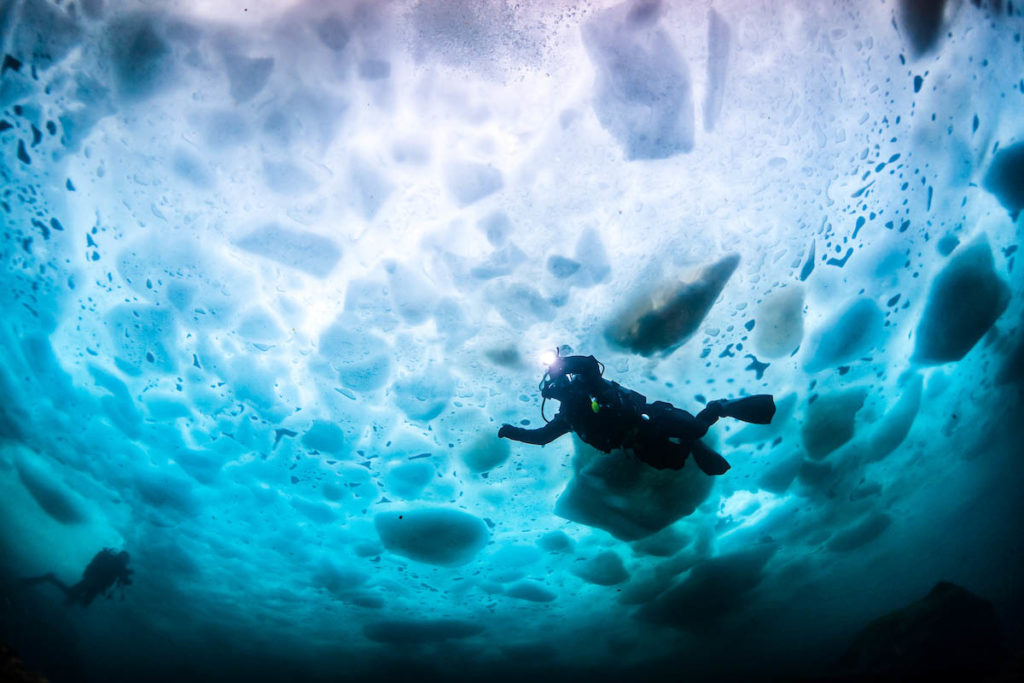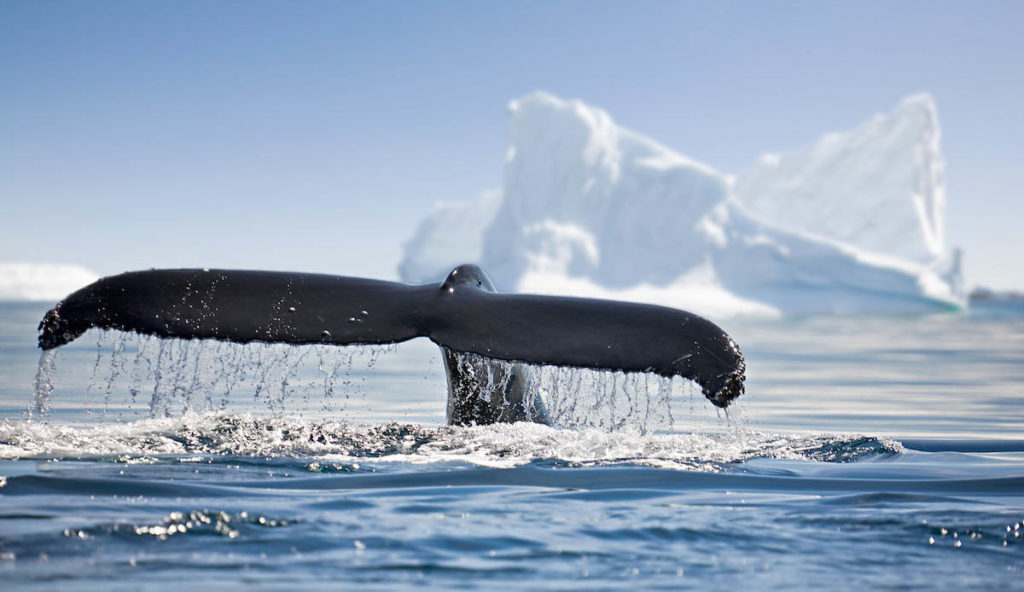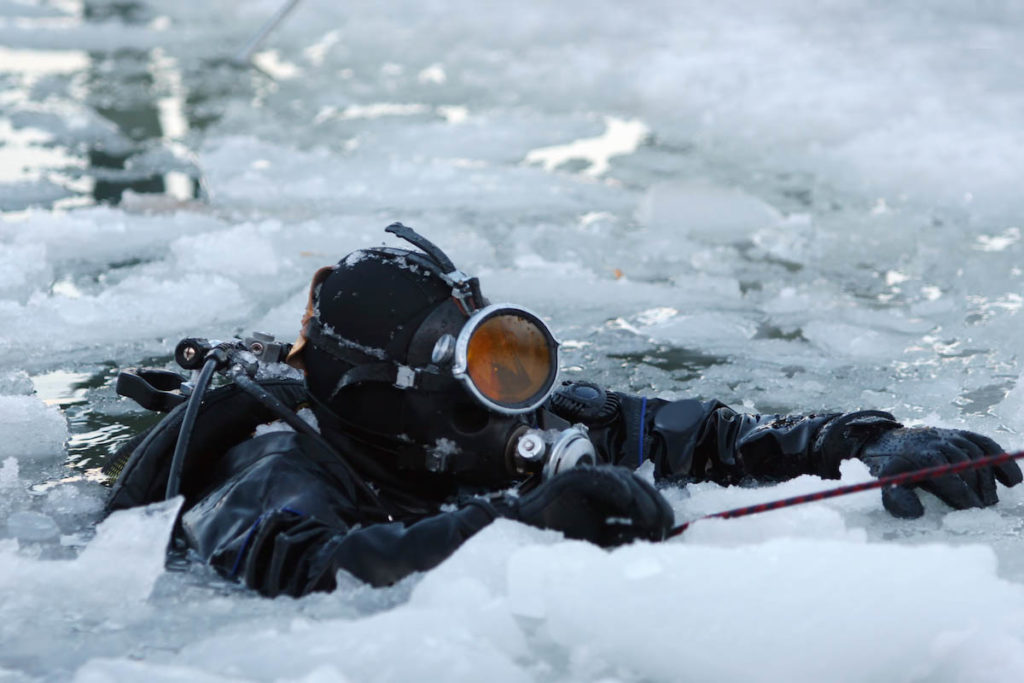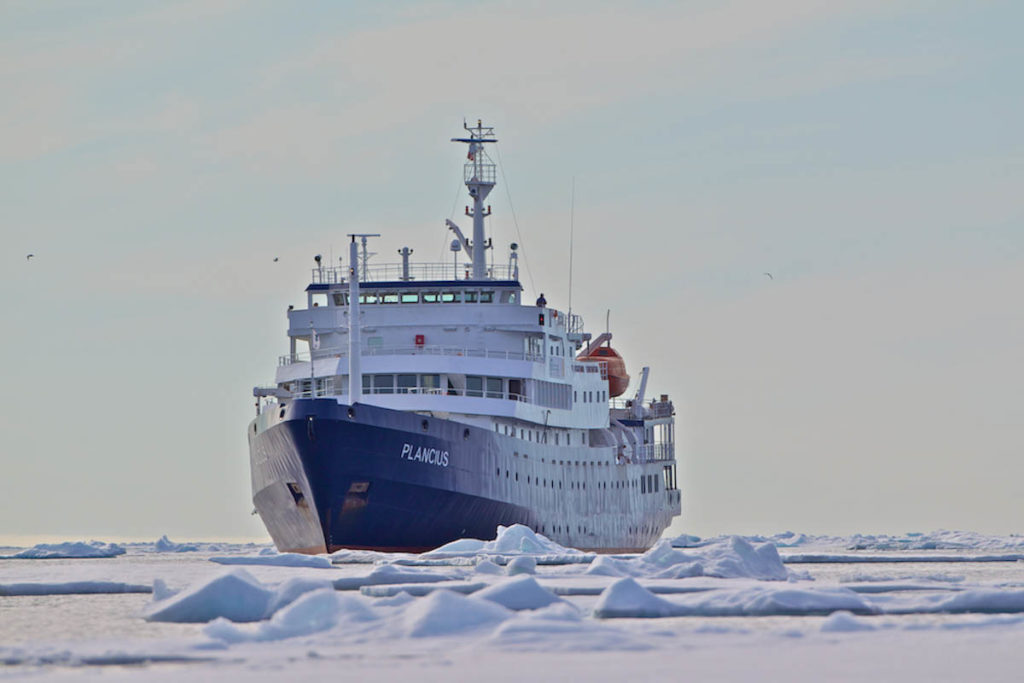Ice diving is one of the most adventurous types of diving out there and is a great way to try something completely different. It is challenging, takes extra preparation, and is different from most recreational dive types. Diving under ice is definitely a team sport and offers the chance to learn ice diving procedures and dive in winter when other types of diving may not possible.
Most importantly, ice divers experience unique underwater environments and marine life few people ever get to see. There is nothing quite like the peace of being under the ice, surrounded by bright blue water and ice formations.
Where Can I go Ice Diving?
Choosing where to go ice diving depends on personal preference, but one of the best ways to go ice diving is during a liveaboard safari to the Arctic or Antarctica. Both destinations are world-class places to experience exceptional wildlife watching and different types of polar diving.
Antarctica
Antarctica liveaboard diving is a great way to explore one of the world’s most remote areas and offers ice diving around the Antarctic Peninsula and the Weddell Sea. The Ice Class M/V Plancius and Ortelius offer liveaboard diving trips that include zodiac diving, shore diving, wall diving, and ice diving in Antarctica. Their varied safaris explore iconic destinations such as the Falkland Islands, South Shetland Islands and Antarctic Peninsula.
The Arctic
Spitsbergen liveaboard diving allows divers to enjoy the varied dive sites of the Arctic, by exploring the remote islands of Norway’s Svalbard archipelago. The best dive sites of Spitsbergen are only accessible by liveaboard and safaris offer ice diving, boat-based diving and even wreck diving. All whilst enjoying the incredibly diverse wildlife of the region. The M/V Plancius is an 89m expedition vessel that offers Arctic liveaboard diving.
A Scoresby Sund liveaboard provides the chance to dive the world’s largest fjord system, located in Greenland. This system of fjords covers an area of about 38,000 square kilometers and reaches depths of up to 1,450 meters. It is a unique destination and liveaboards visiting the area offer ice diving and boat-based diving whilst exploring the landscapes and wildlife of the fjord. The M/V Plancius offers trips to Scoresby Sund during certain Arctic itineraries.
What Marine Life Can Be Seen When Ice Diving?
A better question would be to ask what divers can’tsee when ice diving. The variety and abundance of wildlife in the Arctic and Antarctica is staggering and offers something for everyone to enjoy.
The marine life of Antarctica is very diverse and includes seals, penguins, and approximately 15 species of whales. Divers have the chance to see sea lions and possibly even swim with leopard seals, fur seals and penguins. Smaller creatures include various fish species, starfish, giant isopods, and jellyfish. All of this can be enjoyed whilst exploring sea caves, underwater ice-formations, kelp walls, and bright blue polar waters.
Spitsbergen offers equally fascinating marine life including sea snails, sea butterflies, crabs, sea hedgehogs, and starfish. Divers can swim with sea lions, explore the marine life of wrecks, and experience glaciers. The waters around Spitsbergen are also visited regularly by Minke, Fin, Humpback and Blue whales.
Read our guide Ice Diving Essentials to find out more about these epic ice diving destinations and more. In our guide we share tips for when to visit your preferred ice diving destination, plus answer the most common ice diving questions:
- Who Can Try Ice Diving?
- What Ice Diving Gear Do I Need?
- How Cold Is the Water When Ice Diving?
- How Do Ice Divers Stay Warm?
- What Are the Main Hazards of Ice Diving?
- What Does It Take to Become A Qualified Ice Diver?










